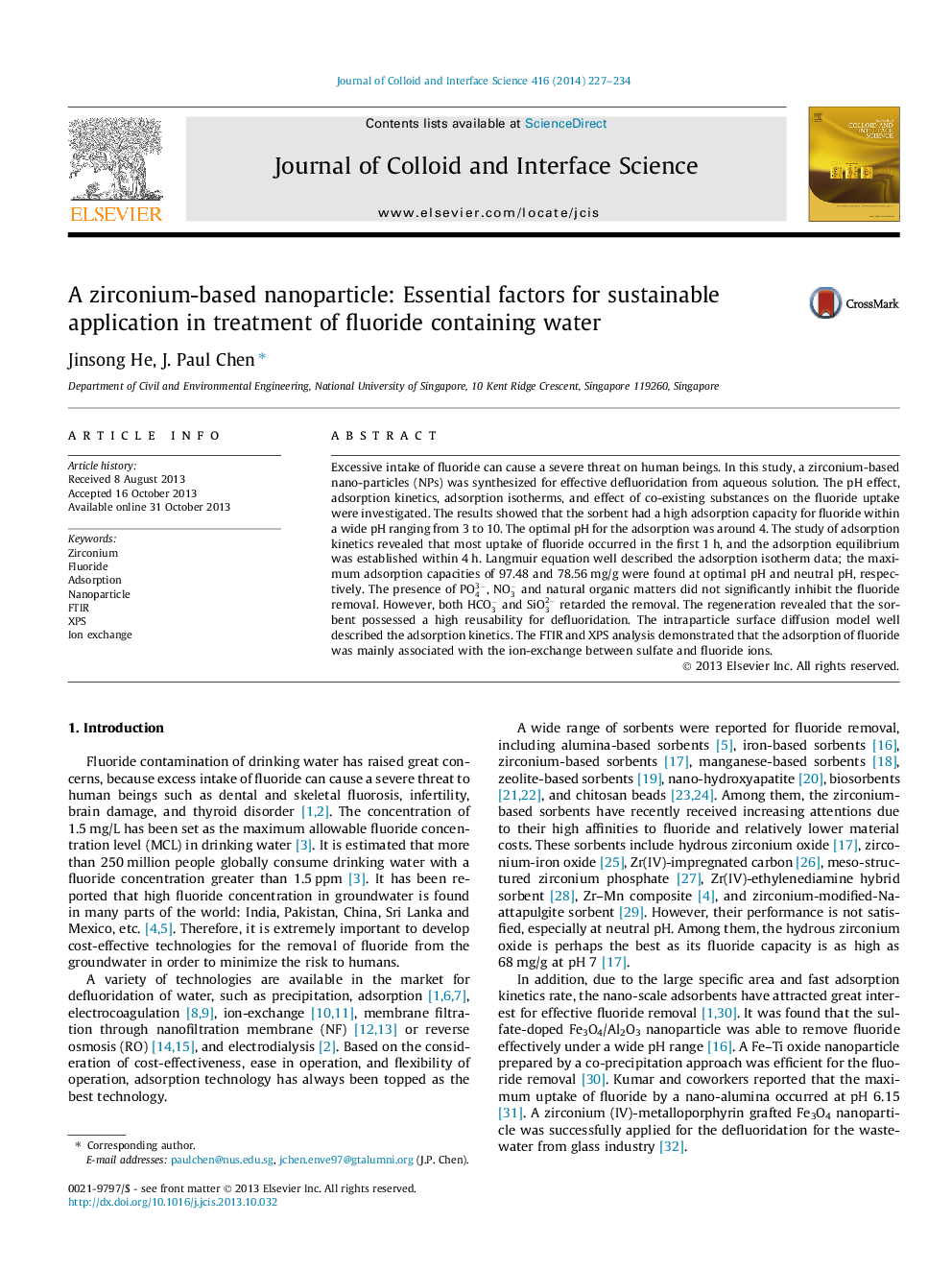| Article ID | Journal | Published Year | Pages | File Type |
|---|---|---|---|---|
| 607415 | Journal of Colloid and Interface Science | 2014 | 8 Pages |
•A zirconium-based sorbent is efficient for fluoride removal from water.•The maximum adsorption capacity of fluoride at neutral pH is 78.56 mg/g.•The uptake of fluoride is due to ion exchange between fluoride and sulfate.
Excessive intake of fluoride can cause a severe threat on human beings. In this study, a zirconium-based nano-particles (NPs) was synthesized for effective defluoridation from aqueous solution. The pH effect, adsorption kinetics, adsorption isotherms, and effect of co-existing substances on the fluoride uptake were investigated. The results showed that the sorbent had a high adsorption capacity for fluoride within a wide pH ranging from 3 to 10. The optimal pH for the adsorption was around 4. The study of adsorption kinetics revealed that most uptake of fluoride occurred in the first 1 h, and the adsorption equilibrium was established within 4 h. Langmuir equation well described the adsorption isotherm data; the maximum adsorption capacities of 97.48 and 78.56 mg/g were found at optimal pH and neutral pH, respectively. The presence of PO43-, NO3- and natural organic matters did not significantly inhibit the fluoride removal. However, both HCO3- and SiO23- retarded the removal. The regeneration revealed that the sorbent possessed a high reusability for defluoridation. The intraparticle surface diffusion model well described the adsorption kinetics. The FTIR and XPS analysis demonstrated that the adsorption of fluoride was mainly associated with the ion-exchange between sulfate and fluoride ions.
Graphical abstractFigure optionsDownload full-size imageDownload high-quality image (46 K)Download as PowerPoint slide
